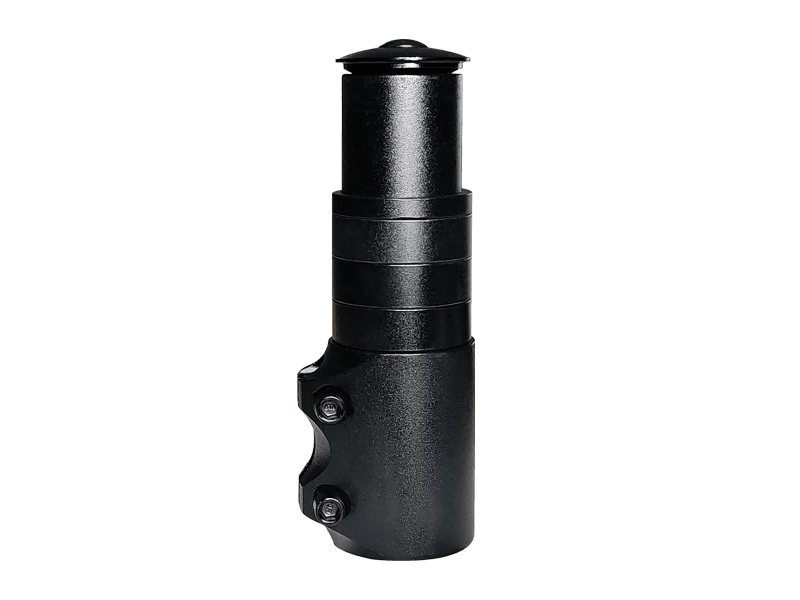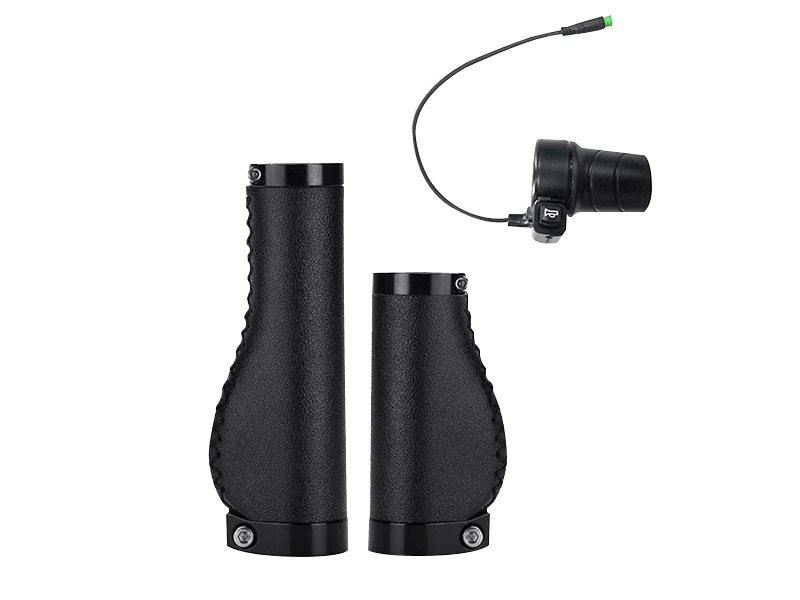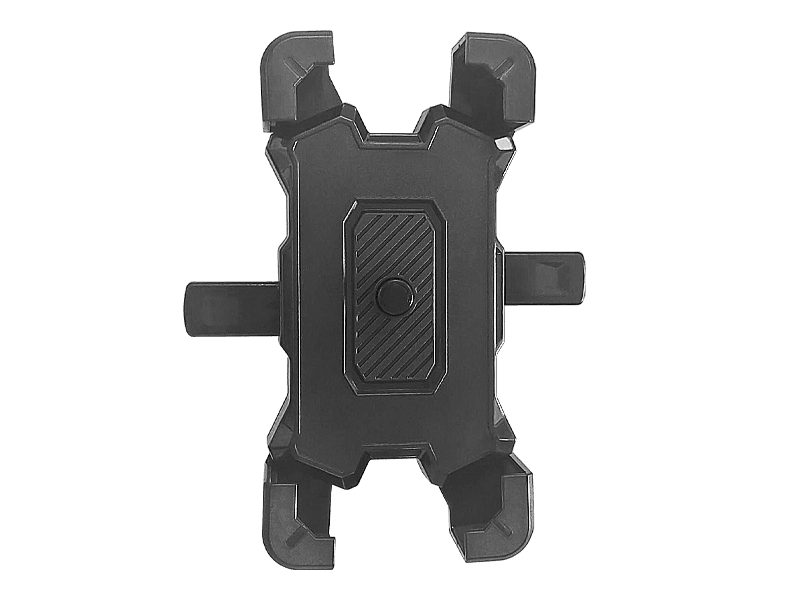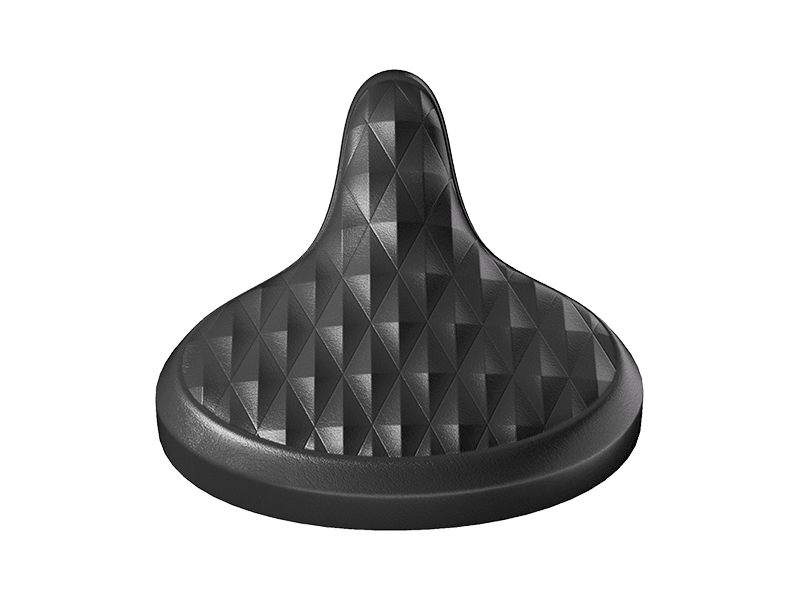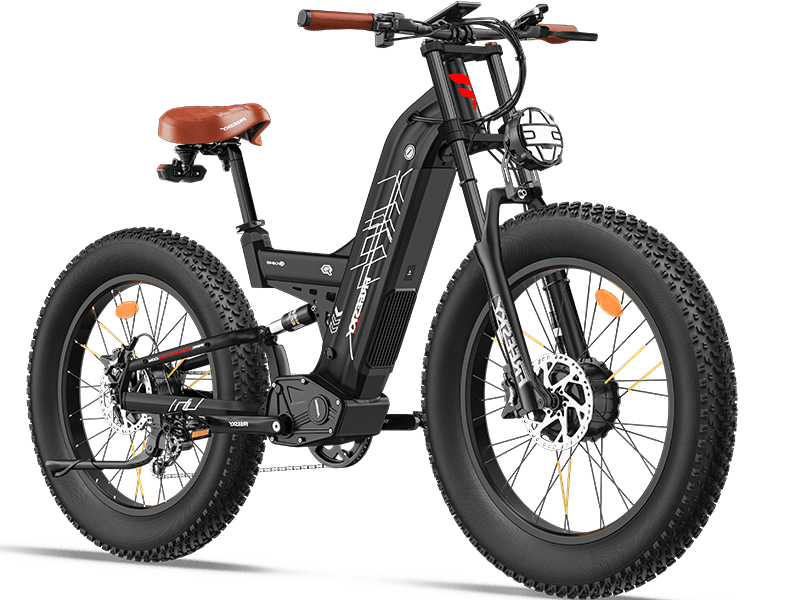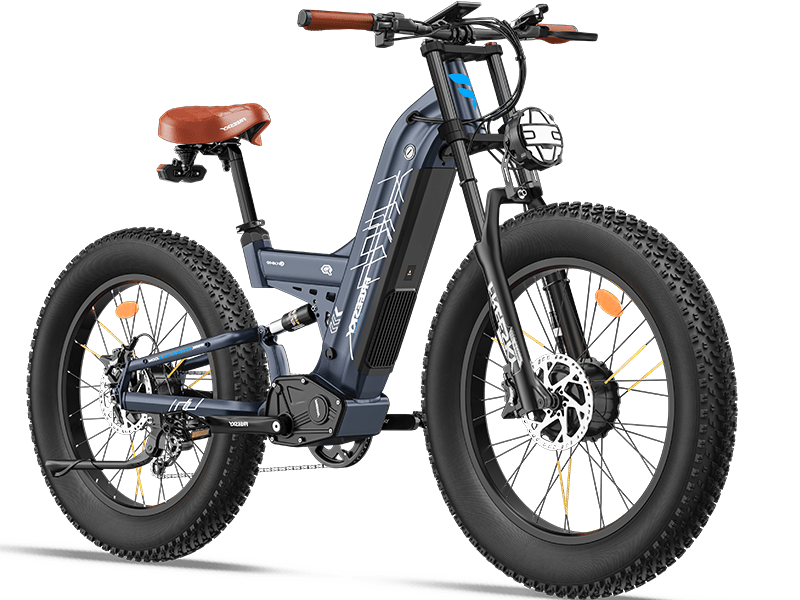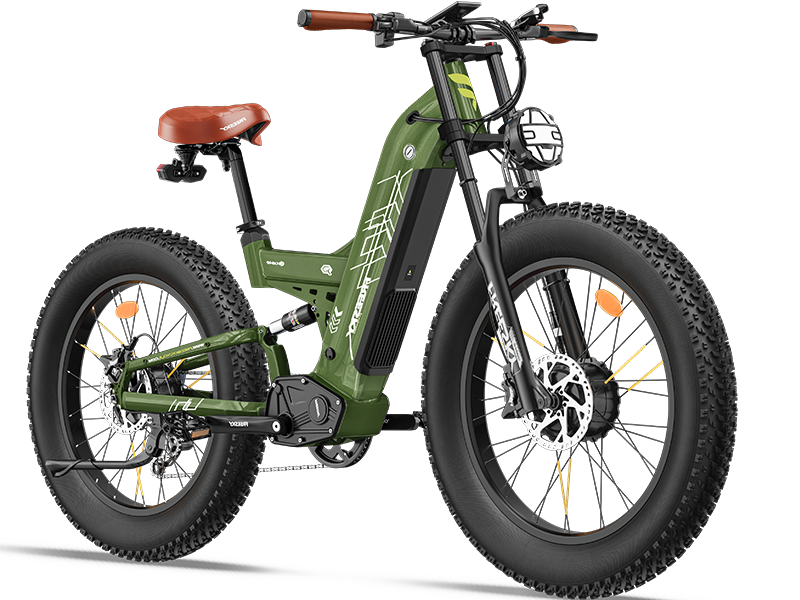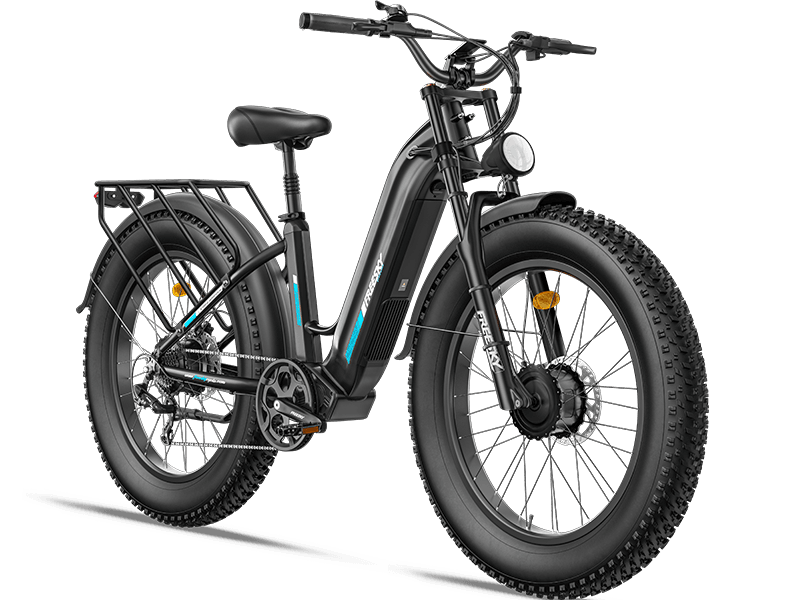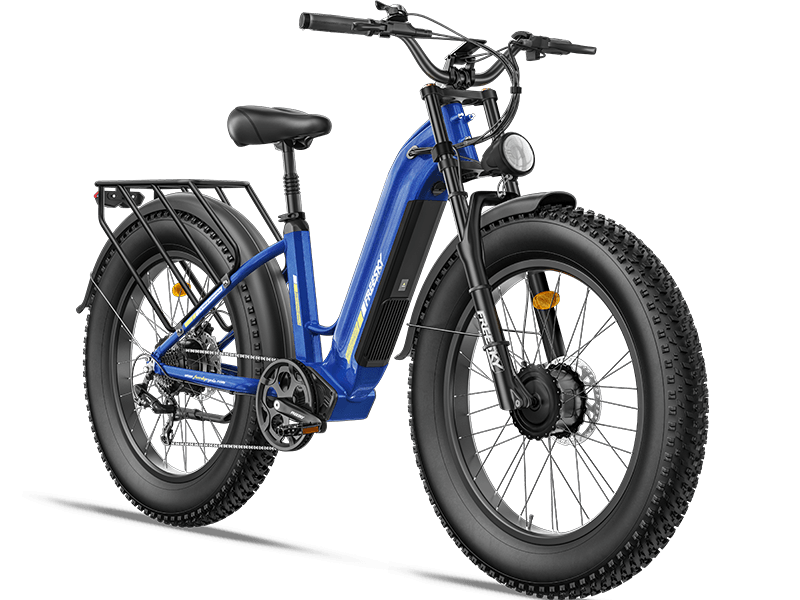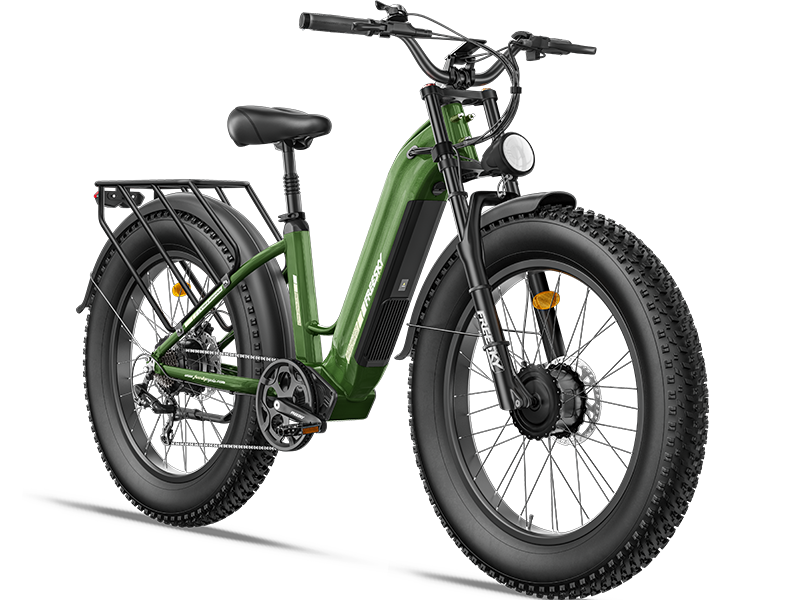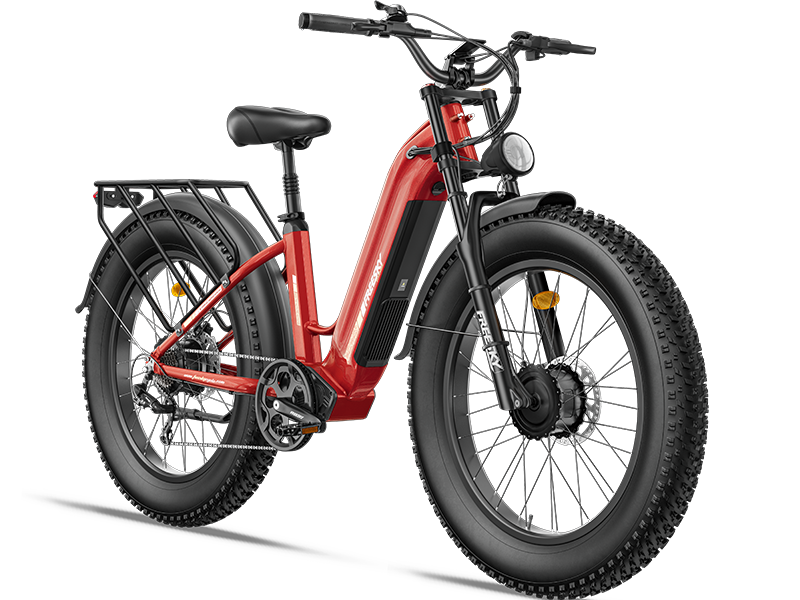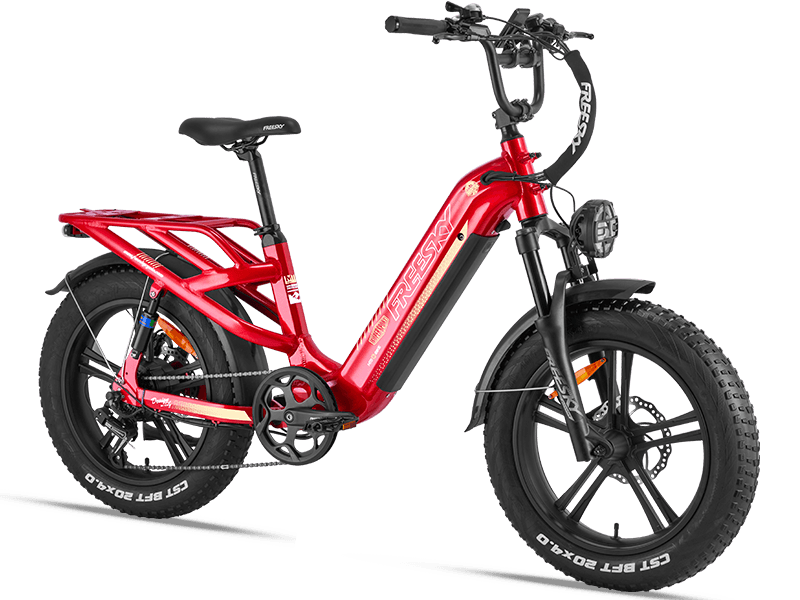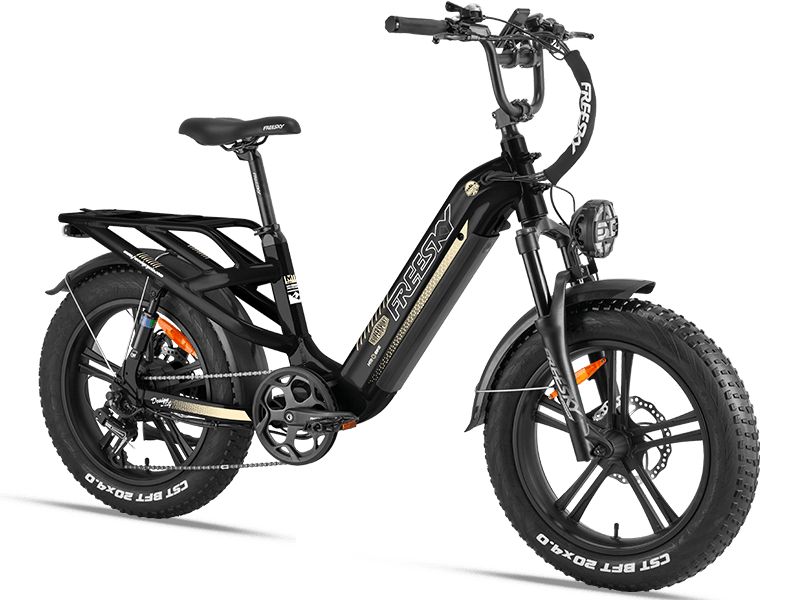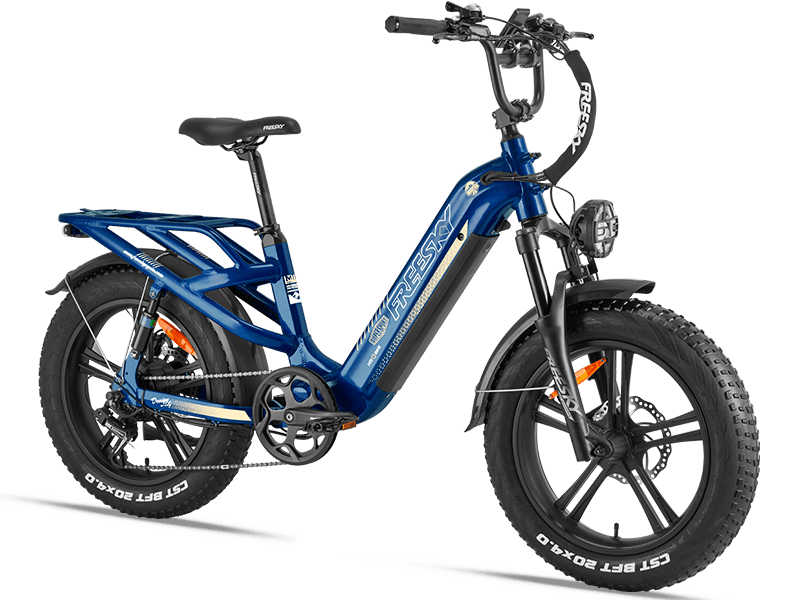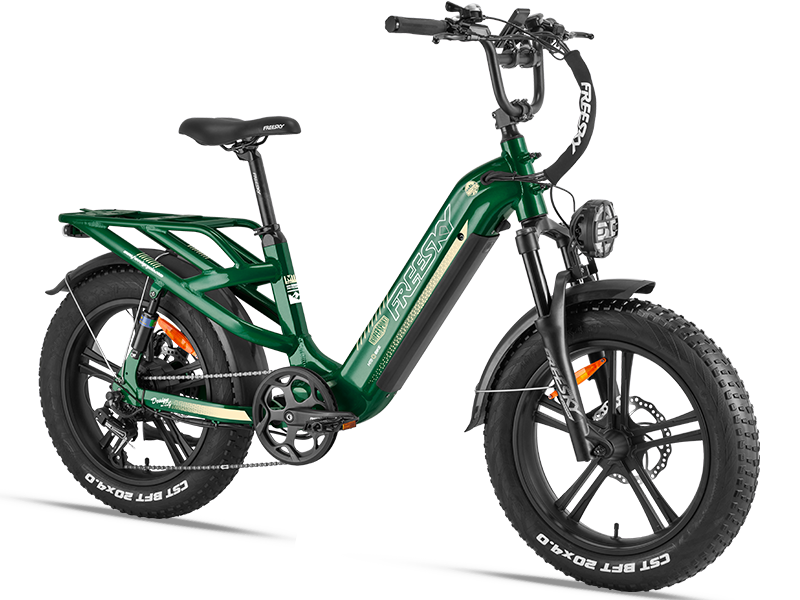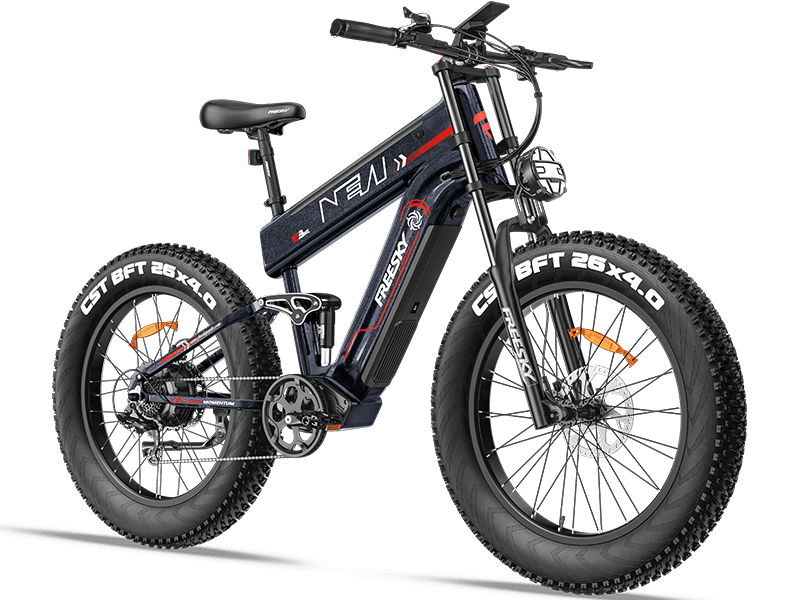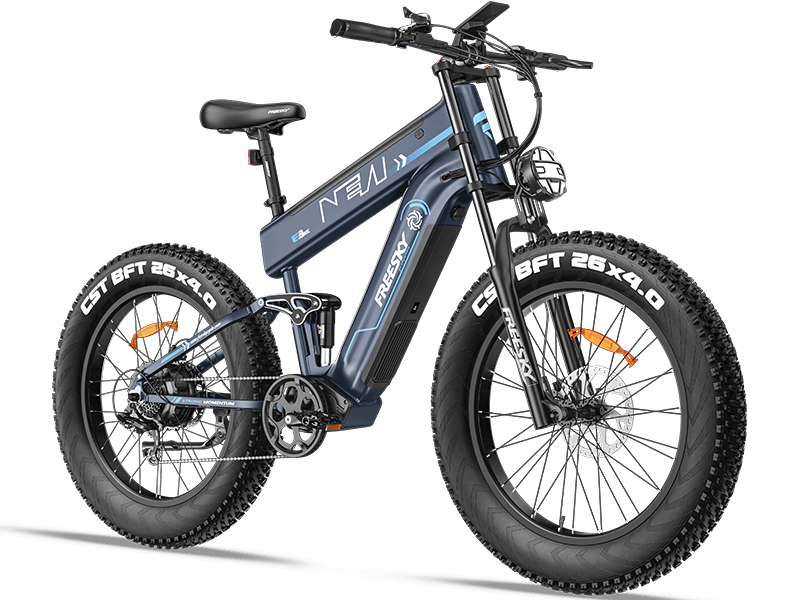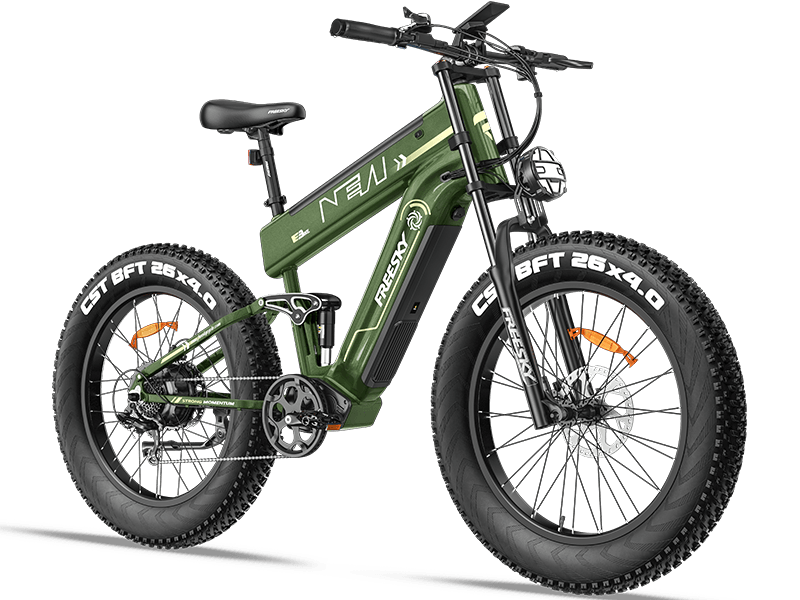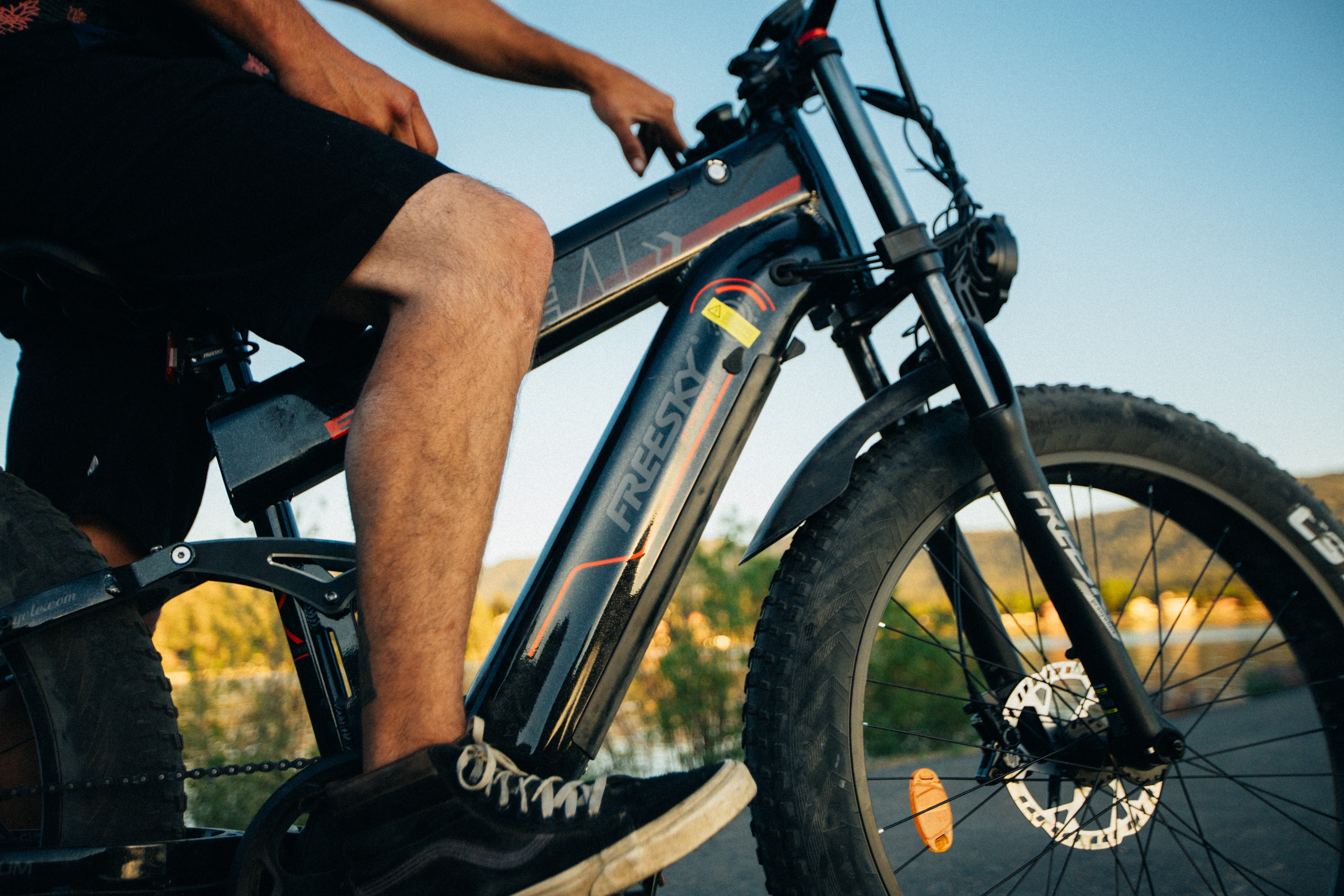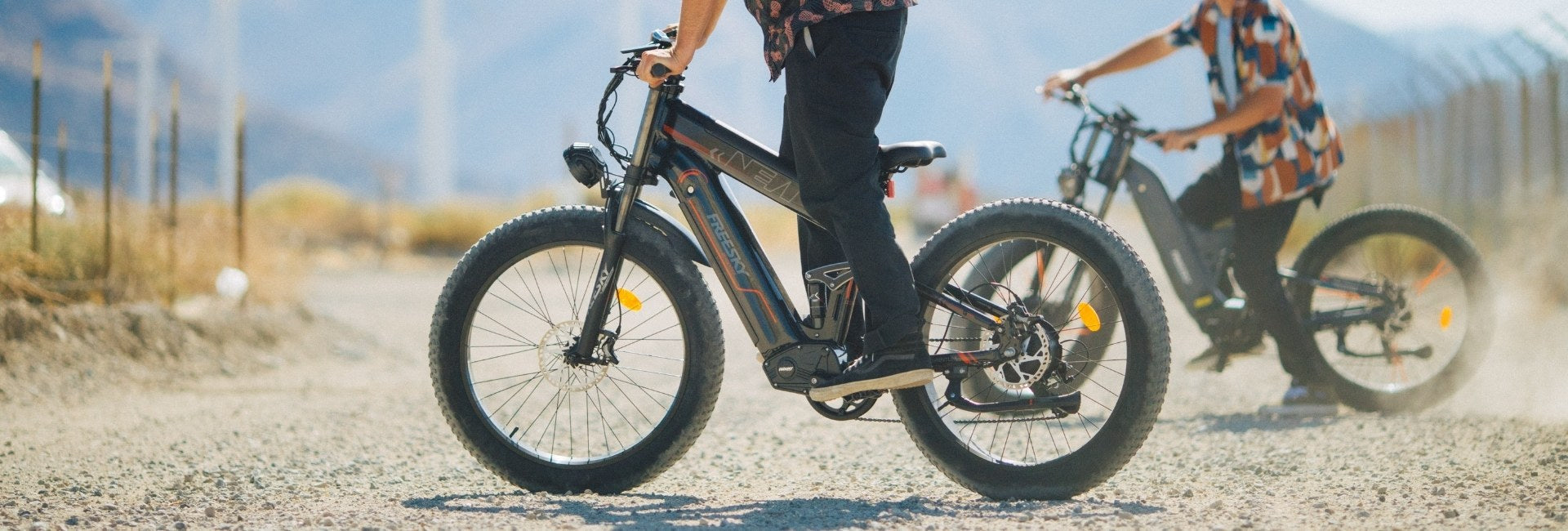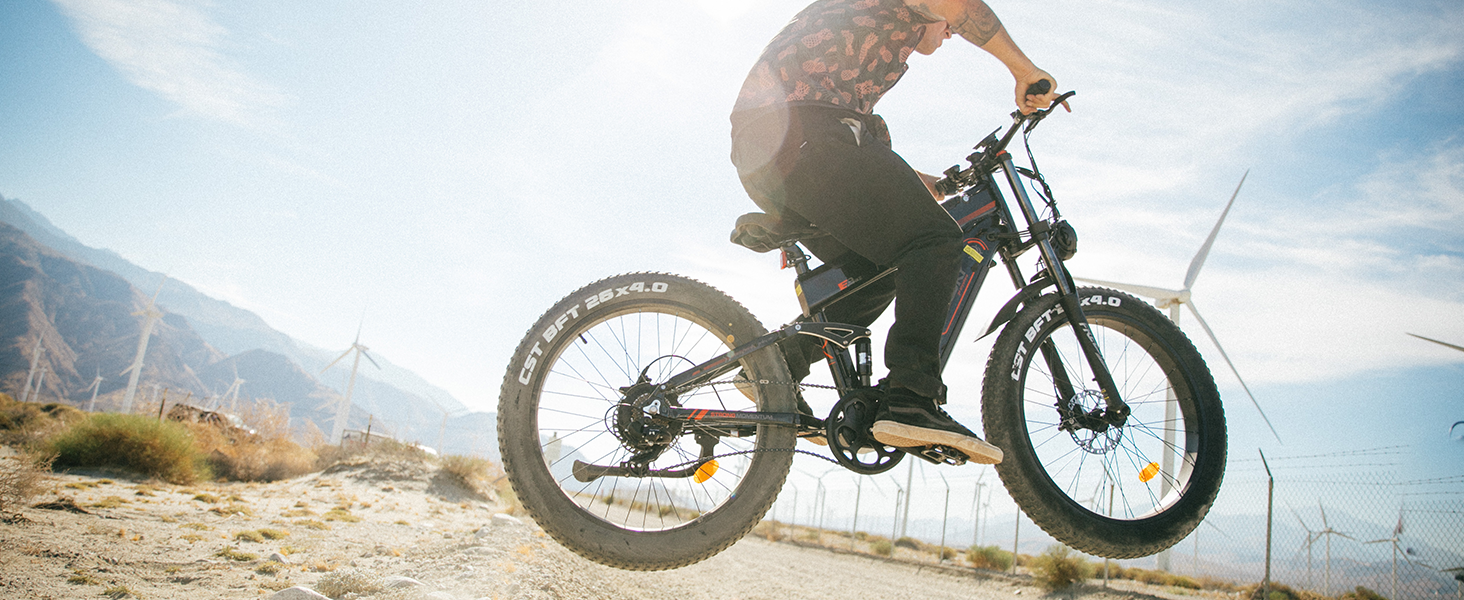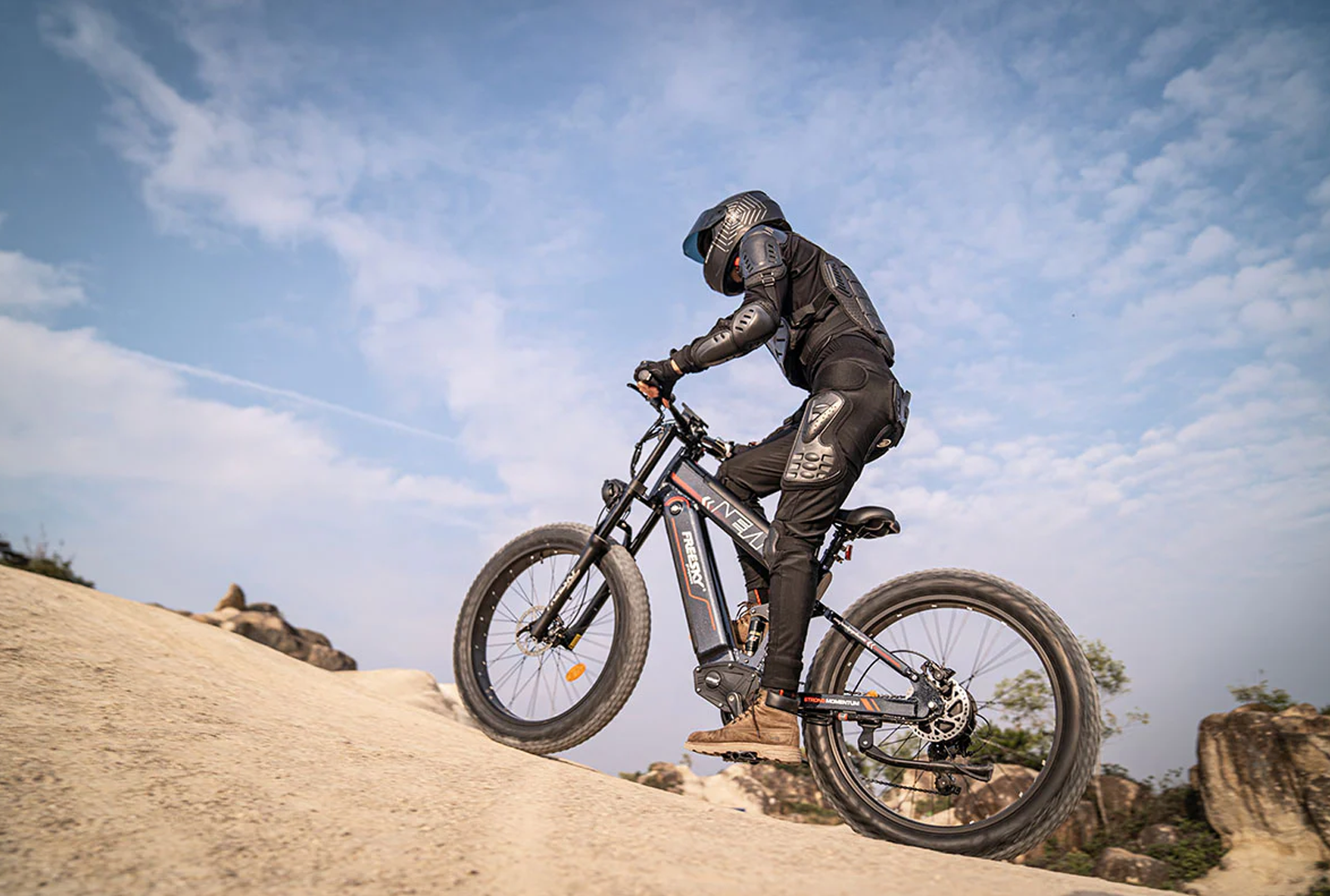Jun 27, 2025
Hardtail vs Full‑Suspension e‑MTBs: A Comprehensive Guide for Riders
Hardtail and full‑suspension electric mountain bikes both offer comfort compared to rigid models, but choosing the right type can significantly improve your ride. In this guide, we'll compare designs, performance, maintenance, and usage, helping you choose your next e‑MTB with confidence.
Why This Comparison Matters
Selecting between a hardtail e‑bike (which has suspension only in the front fork) and a full‑suspension e‑MTB (equipped with both front and rear suspension) affects how the bike handles typical European terrain, your comfort, and upkeep. Whether riding in the Alps, across Catalonia’s rugged trails, or through forested routes in the Ardennes, the right bike makes all the difference.
1. Suspension System
Hardtail e‑MTB: Front suspension only. Suitable for smoother bike paths, gravel routes, and paved forest tracks.
Full‑suspension e‑MTB: Comes with both front fork and rear shock. Ideal for rougher environments—rocky descents, alpine switchbacks, and forest trails with roots and technical obstacles.
👉 In summary: hardtails are lighter and efficient; full-suspension bikes provide superior comfort and control on rough ground.
2. Cost and Value
Hardtails: Generally more affordable (€1,200–€3,000), offering excellent value for everyday riders.
Full‑suspension: Typically priced from €1,800 to over €7,000, reflecting advanced suspension and frame complexity.
Choose based on your terrain and how much comfort, control, and durability you're willing to invest in.
3. Maintenance
Hardtail e‑bikes: Simpler design, fewer moving parts—easier to maintain and repair. Ideal for low-maintenance riders.
Full‑suspension: Requires more regular servicing of shock, pivot bearings, and seals. When maintained well, they’re durable—just be prepared for upkeep.
🔧 Tip: A professional service once or twice a year helps extend lifespan.
4. Handling and Control
Hardtails: Stable and manoeuvrable on smooth paths and urban environments.
Full‑suspension: Offers better traction and control on technical trails and uneven surfaces. Perfect for confident descending and tackling roots and rocks.
5. Speed and Efficiency
Hardtails: Lighter and more efficient on flat roads and gentle climbs. Better energy use and longer battery range.
Full‑suspension: Heavier but more stable on tricky terrain. Battery drains faster, but they maintain speed and confidence on off-road rides.
6. Comfort and Ride Quality
Hardtails: Adequate for smooth surfaces, but you’ll feel more vibration on rough terrain.
Full‑suspension: Dual absorbers make long rides much more comfortable, reducing rider fatigue and easing strain on joints.
Usage Scenarios
Hardtail e‑Bikes
Perfect for:
Urban commuting
Bike path outings
Light cross-country routes
Budget-conscious riders
Full‑Suspension e‑Bikes
Ideal for:
Mountain biking
Technical trails
Long epic rides
Riders who want comfort and control on rough terrain
Pros and Cons Summary
Aspect
Hardtail e‑MTB
Full‑Suspension e‑MTB
Price
✔️ More affordable
❌ More expensive
Weight/Power
✔️ Lighter & efficient on flats
❌ Heavier, more battery use
Comfort
✔️ Decent on smooth trails
✔️ Excellent on rough terrain
Control
✔️ Agile and responsive
✔️ Superior traction and stability
Maintenance
✔️ Simpler, reliable
❌ Requires routine servicing
Trail Capability
✔️ Light trails only
✔️ All-terrain & technical trails
Buying Guide: What to Consider
Budget: Hardtails approx. €1,200–€3,000 | Full‑suspension from €1,800+
Terrain: Smooth journeys = hardtail | Rough or varied = full-suspension
Maintenance: Simple upkeep vs more components
Experience level: Hardtails suit beginners | Full‑suspension best for experienced riders
Test Ride Tips
When trying bikes:
Assess comfort and fit
Test suspension performance
Notice gear and brake feel
Ride varied terrain: flat, hills, twisty paths
Check battery life during longer rides
Final Verdict
Hardtail e‑MTBs are ideal for practical, cost-effective transportation and light trail rides.
Full‑suspension e‑MTBs are better suited for adventurous riders seeking superior comfort, control, and performance across rugged terrain.
Why Choose Freesky?
Our range includes models to suit all riding needs:
Warrior Pro: A nimble full-suspension e‑MTB equipped with a Samsung-powered 48V 30Ah battery and dual suspension system—ideal for tackling technical trails across Europe with comfort and confidence.
Alaska Pro: A long-travel, full-suspension powerhouse with 48V 41Ah battery—designed for endurance rides across diverse terrain.
Read More
Apr 18, 2025
Alaska M-520 Electric Mountain Bike Comprehensive Guide
The Ultimate Choice for Off-Road AdventuresStep into the wild and dominate any terrain with the Alaska M-520, designed for peak performance and unmatched versatility. Equipped with dual batteries, the Alaska M-520 ensures long-lasting power for extended journeys. Whether you're traversing mountain trails, gliding over sandy beaches, or tackling city streets, this e-bike offers unparalleled performance and reliability. It’s the ultimate choice for outdoor enthusiasts who seek a bike that can handle it all, making every ride an adventure.
Go Anywhere with AlaskaThe Alaska M-520 is engineered to handle diverse terrains with ease. From city roads to rugged trails and everything in between, this e-bike excels in every environment. Whether you're riding through urban landscapes, exploring dense forests, or climbing mountain paths, the Alaska M-520’s robust design and powerful motor provide the strength and durability you need. It's a perfect companion for long-distance riders and those who demand versatility from their e-bike.
The Upgrade Dual Battery 48V 41AhGo the Distance with Dual EnergyWith dual removable batteries—18Ah on top and 23Ah below—the Alaska M-520 ensures you can go the distance. The advanced battery system delivers a remarkable range of 144-257 kilometers on a single 6-8 hour charge, depending on the terrain and power assist level. This makes the Alaska M-520 the ideal choice for long-distance riders, daily commuters, and outdoor adventurers who need reliable power for extended rides.
Powerful Motor for High PerformanceRide Fast, Ride FearlessThe Alaska M-520 is powered by a high-performance motor that offers 130 N·m of torque, ensuring smooth acceleration and the ability to tackle steep hills with ease. Whether you're conquering challenging mountain paths, racing along sandy shores, or gliding over gravel trails, the Alaska M-520 provides the power you need to explore without limits. Its motor optimizes energy efficiency, helping to extend your ride while delivering consistent, reliable power across all terrains.
Dual Suspension & Hydraulic Disc BrakesSmooth Rides and Safe StopsComfort and safety are key features of the Alaska M-520. Equipped with a lockable, adjustable front suspension hydraulic downhill fork and rear suspension, this e-bike ensures that you can ride for hours without feeling the impact of uneven terrains. The advanced suspension system absorbs shocks from bumpy roads, allowing for a smooth ride no matter where you go. The dual hydraulic disc brakes—on both front and rear wheels—offer powerful, responsive braking, ensuring you can stop safely even in the most challenging conditions.
Smart LCD DisplayStay in control with the Alaska M-520's advanced LCD display. The smart display provides real-time feedback on key ride information, including your speed, remaining battery life, distance traveled, and the selected power assist mode. With five levels of pedal assist (PAS), you can easily adjust your ride to suit your needs, whether you prefer a relaxed cruise or a more intense workout. The display also includes key safety features like headlight status, making it easy to monitor your ride’s performance.
UL2271 Certified BatterySafety is paramount, which is why the Alaska M-520 uses FREESKY’s UL2271 certified batteries. These batteries are rigorously tested to meet the highest safety standards, offering exceptional protection against both electrical and structural risks. The 41Ah(18Ah+23Ah) dual battery system allows you to cover impressive distances of up to 257 kilometers in pedal assist mode. Whether you're heading out for a long trail ride or commuting across town, you can trust that the Alaska M-520 will deliver consistent, reliable power.
Thumb ThrottleFor easy acceleration, the Alaska M-520 is equipped with an ergonomically positioned thumb throttle. Simply press to unleash instant power and speed, allowing you to cruise effortlessly on flat terrain or boost up steep hills with minimal effort. This intuitive feature enhances the rider experience, giving you complete control over your speed.
Rear Derailleur for Smooth ShiftingThe Alaska M-520 is equipped with a high-quality rear derailleur, ensuring that gear shifts are smooth and precise. Whether you’re climbing steep hills or cruising on flat roads, you can effortlessly change gears to maintain optimal performance. The reliable gear system ensures that you’re always prepared for any terrain.
Rear SuspensionLong-distance rides are made more comfortable with the Alaska M-520’s rear suspension. Designed to absorb shocks from rough trails, it helps reduce strain on your body, ensuring that each ride is stable and comfortable. Whether you’re navigating rocky mountain paths or bumpy urban streets, the rear suspension will keep you in control.
Front Suspension ForkThe adjustable front suspension fork is another key feature that enhances comfort and control. It minimizes vibrations and impacts, reducing fatigue on your arms and hands, even when riding over rough or uneven surfaces. This ensures that every ride, no matter the terrain, remains comfortable and under control.
4-Piston Hydraulic BrakesWhen it comes to safety, the Alaska M-520 doesn’t compromise. The 4-piston hydraulic disc brakes offer superior stopping power, making sure you can safely stop at a moment’s notice. Whether you’re riding downhill, through muddy trails, or on slippery surfaces, the brakes ensure smooth, controlled stopping power, giving you peace of mind during your adventures.
Conclusion: A Versatile and Reliable Adventure BikeThe Alaska M-520 combines rugged performance, advanced technology, and exceptional comfort, making it the ultimate choice for off-road and urban riders alike. With its dual battery system, powerful motor, dual suspension, and high-end safety features, the Alaska M-520 ensures that every ride is smooth, safe, and exhilarating.
If you're looking for a bike that can handle anything from mountain trails to city streets, the Alaska M-520 is your perfect companion. Ready to explore without limits? Take your adventure to the next level with the Alaska M-520.
Check out the latest offer on the Alaska M-520!
Alaska Pro M-520 Dual batteries, ultimate range performance.
Read More
Mar 14, 2025
Can E-bikes Go Up Steep Hills? Exploring the Capabilities and Challenges
In the modern era of environmental consciousness and technological advancements, electric bikes, commonly known as e-bikes, have emerged as a popular mode of transportation. Their versatility, ease of use, and relative affordability have made them a favorite among commuters, fitness enthusiasts, and casual riders alike. However, the question remains: can e-bikes effectively conquer steep hills? This article aims to delve into this inquiry, examining the capabilities of e-bikes, the challenges they face on inclines, and the factors that influence their performance.
To understand the ability of e-bikes to climb steep hills, it's essential to first grasp the fundamental principles behind their operation. E-bikes are equipped with an electric motor that provides additional power to the rider, either through a throttle or by assisting with pedal power. This motor is powered by a rechargeable battery, which determines the range and duration of the bike's electric assistance. The amount of power delivered by the motor can vary depending on the model and settings, ranging from a subtle boost to a significant push.
When ascending a steep hill, the e-bike's motor must overcome the increased resistance caused by gravity. The steeper the incline, the greater the force required to ascend it. The performance of the e-bike on hills is influenced by several key factors, including the power of the motor, the capacity of the battery, the weight of the bike and rider, the gearing system, and the type of terrain.
The power of the motor is a crucial determinant. High-powered motors are better equipped to handle steep inclines, providing sufficient torque to overcome the resistance. However, powerful motors also tend to consume more battery power, limiting the range of the bike. Conversely, lower-powered motors may struggle on steeper hills, especially when carrying heavier loads.
The capacity of the battery is another essential factor. A larger battery can store more energy, allowing for longer periods of electric assistance. This is particularly important when climbing hills, as the motor may need to work harder and draw more power from the battery. Riders who frequently encounter steep hills may benefit from investing in a bike with a larger battery capacity.
The weight of the bike and rider also plays a role. A heavier bike and rider require more energy to move, putting additional strain on the motor and battery. Lightweight e-bikes may have an advantage on hills, as they require less power to propel.
The gearing system of the e-bike can also affect its hill-climbing capabilities. Similar to traditional bicycles, e-bikes often have multiple gears that allow riders to adjust the resistance when pedaling. Lower gears provide easier pedaling but slower speeds, while higher gears offer faster speeds but require more effort. Riders ascending hills may find it beneficial to shift to lower gears, reducing the amount of work required to pedal and relying more on the motor's assistance.
Terrain conditions can also influence the performance of e-bikes on hills. Loose soil, gravel, or slippery surfaces can reduce traction and make climbing more challenging. Riders should be aware of the conditions they are riding in and adjust their approach accordingly, such as reducing speed or taking alternative routes.
Despite these challenges, e-bikes are capable of climbing steep hills with varying degrees of success. The key is to choose a bike that is suitable for the rider's needs and the terrain they encounter. Riders may need to experiment with different settings and techniques to find the optimal balance between motor assistance and pedal power. Additionally, regular maintenance and proper care of the e-bike, such as keeping the battery charged and the motor clean, can help ensure optimal performance.
It's worth noting that not all e-bikes are designed for off-road or steep hill climbing. Some models are specifically tailored for urban commuting or casual riding on flat terrain. Riders interested in conquering steep hills should research and compare different models to find one that is suitable for their intended use.
In conclusion, the ability of e-bikes to climb steep hills depends on a variety of factors, including the power of the motor, the capacity of the battery, the weight of the bike and rider, the gearing system, and the terrain conditions. With careful selection and proper usage, e-bikes can be a viable option for riders who need to ascend steep inclines. However, riders should be aware of the limitations of their bike and adjust their approach accordingly to ensure a safe and enjoyable ride.
Read More


